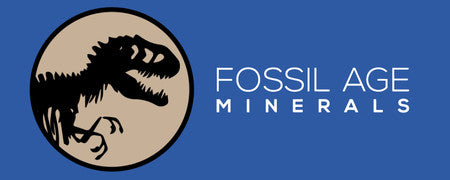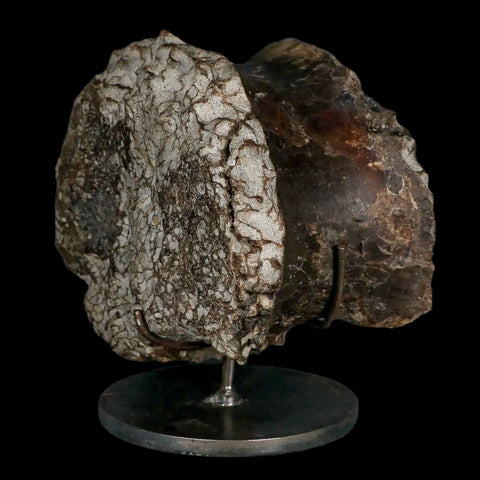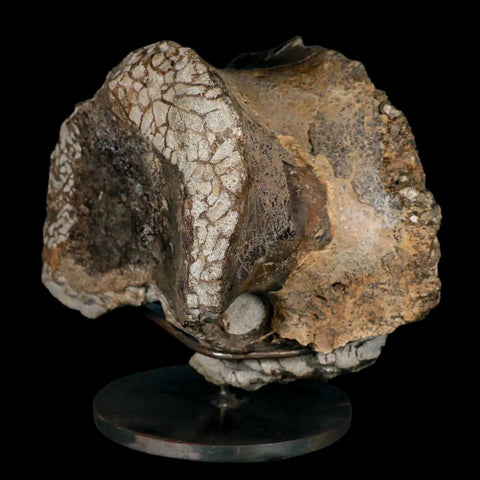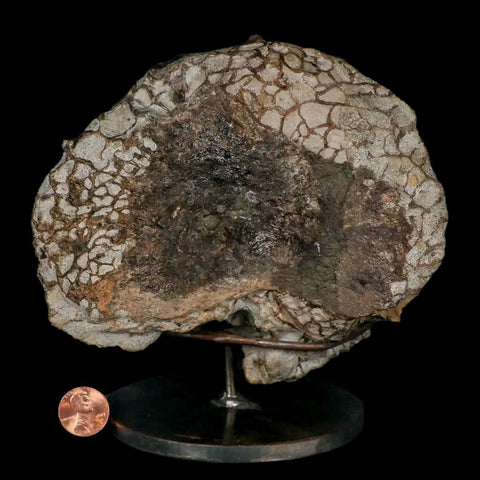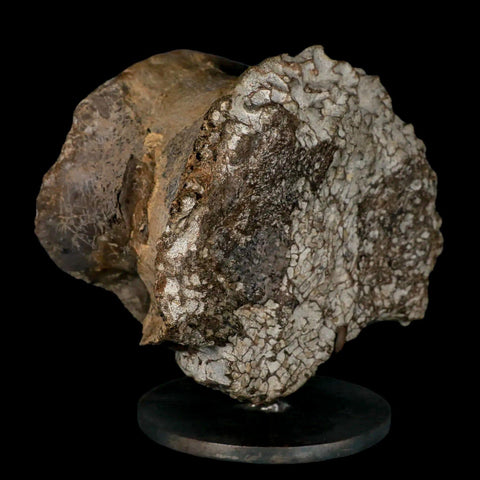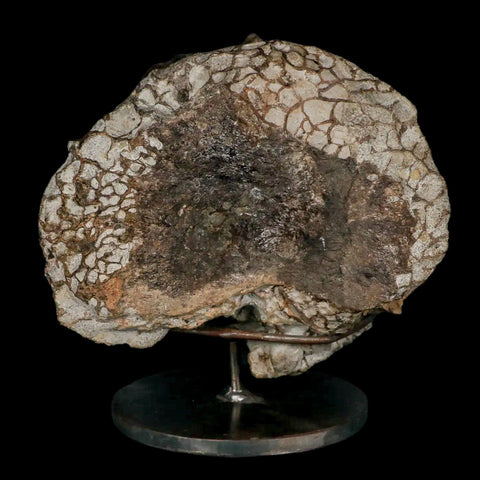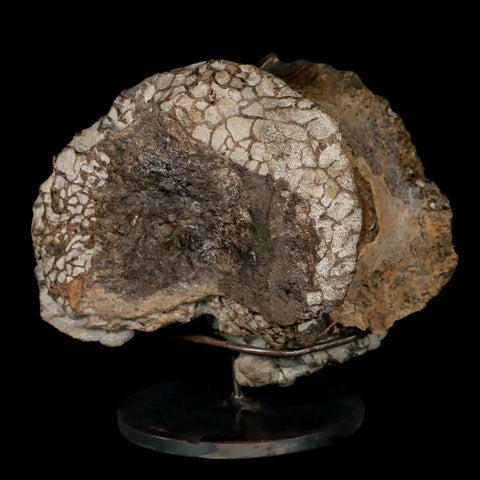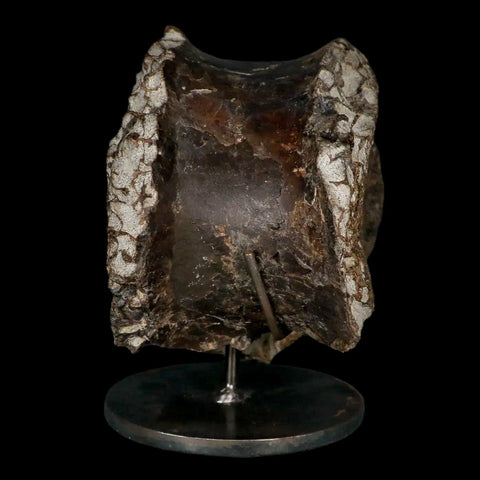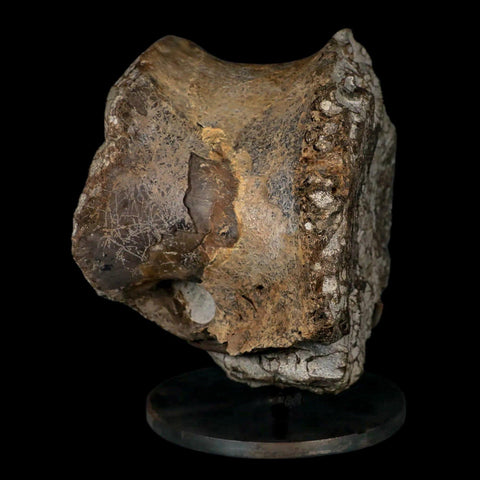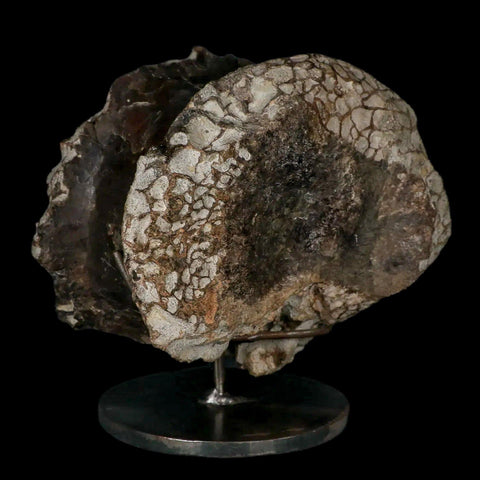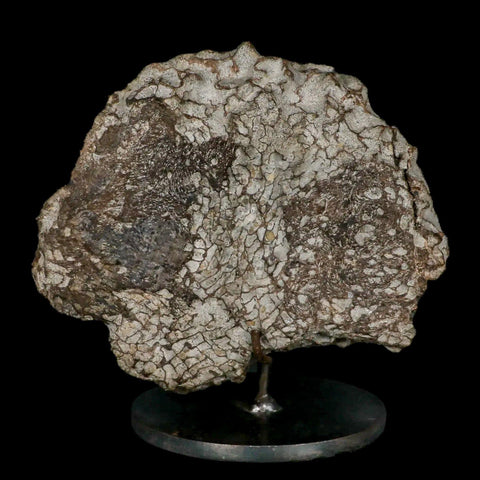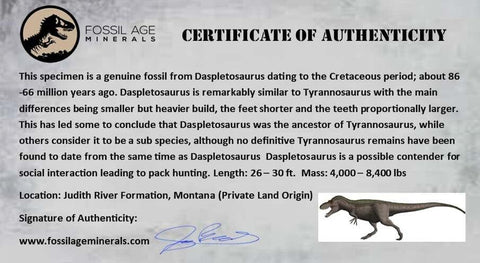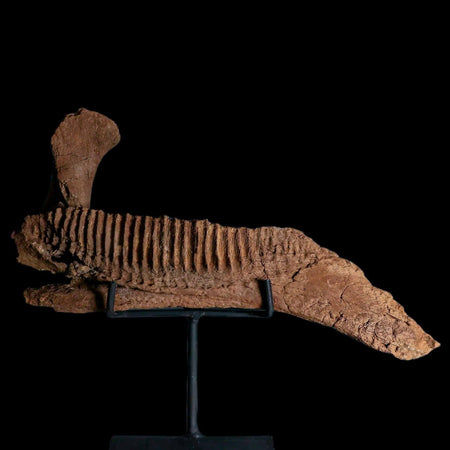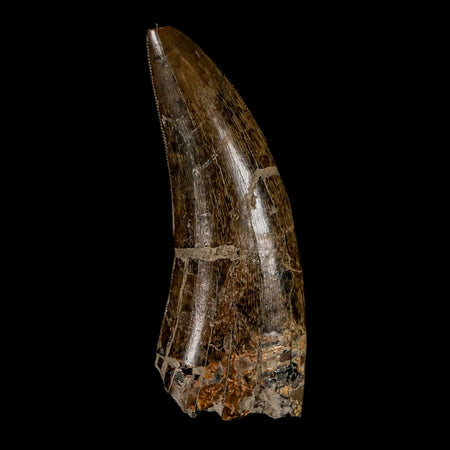6" Daspletosaurus Tyrannosaur Dinosaur Fossil Vertebrae Judith River FM MT COA
Location: Judith Formation, Montana (Private Land Origin)
Weight: 5 Pounds 15.4 Ounces (With Metal Stand)
Dimensions: 6 Inches Long, 5 Inches Wide, 4 Inches Thick (With Metal Stand)
Fossil Dimensions: 6 Inches Long, 5 Inches Wide, 3.5 Inches Thick
Comes with a Free Custom Metal Stand.
Comes with a Certificate of Authenticity.
The item pictured is the one you will receive.
Name: Daspletosaurus (Frightful lizard).
Classification: Theropoda, Tyrannosauria, Tyrannosauridae.
Type: Carnivore.
Size: 8-9 meters long
Known locations: Canada, Alberta, Judith River Group - USA, Montana, Judith River Formation.
Time period: Campanian of the Cretaceous.
Daspletosaurus is remarkably similar to Tyrannosaurus with the main differences being smaller but heavier build, the feet shorter and the teeth proportionally larger. This has led some to conclude that Daspletosaurus was the ancestor of Tyrannosaurus, while others consider it to be a subspecies, although no definitive Tyrannosaurus remains have been found to date from the same time as Daspletosaurus.
Daspletosaurus is a possible contender for social interaction leading to pack hunting. At least two skulls show tooth marks that were inflicted on the face, with one of the skulls belonging to a juvenile showing that the tooth marks had healed over, indicating that the bite was not intended to be fatal. Face biting occurs in other predators and can relate to a number of reasons including dominance over a group subordinate, territorial dominance, or possibly even being inflicted during the mating process. An alternative explanation however is that these marks were caused by an ailment such as a parasitic infection.
In Montana, the remains of three Daspletosaurus and five hadrosaurs have been found in a bone bed together. It’s unlikely that the bones had been washed together via a river flow, and some consider this evidence that Daspletosaurus may have formed packs. Of the three remains, one was an adult, another juvenile, but the age of the third cannot be determined. However this only really proves that three Daspletosaurus died in the same location.


